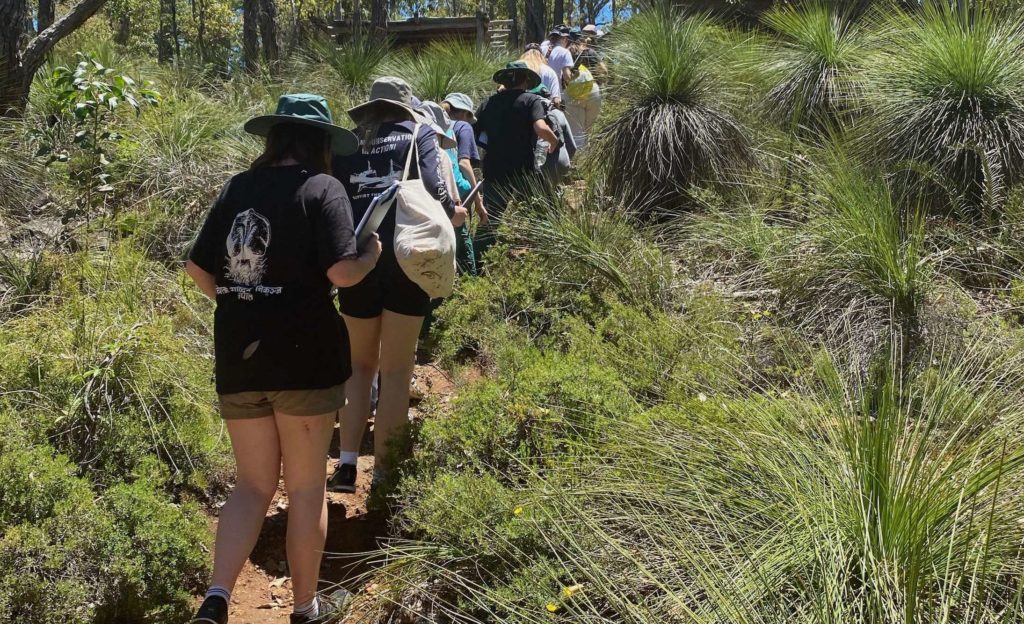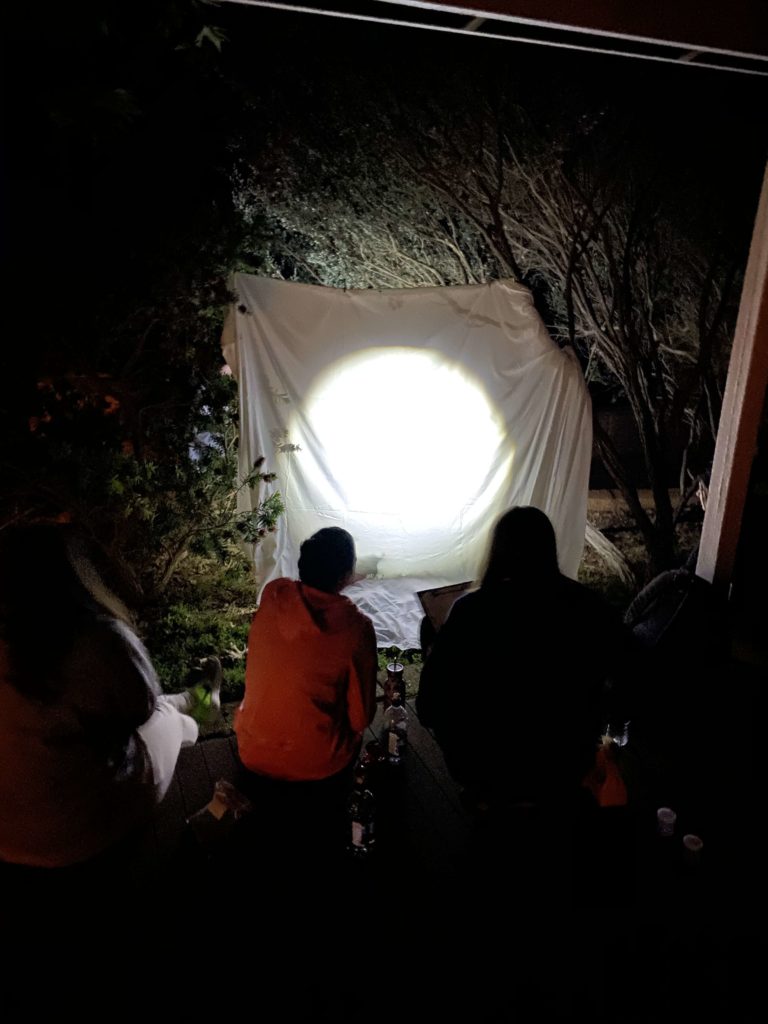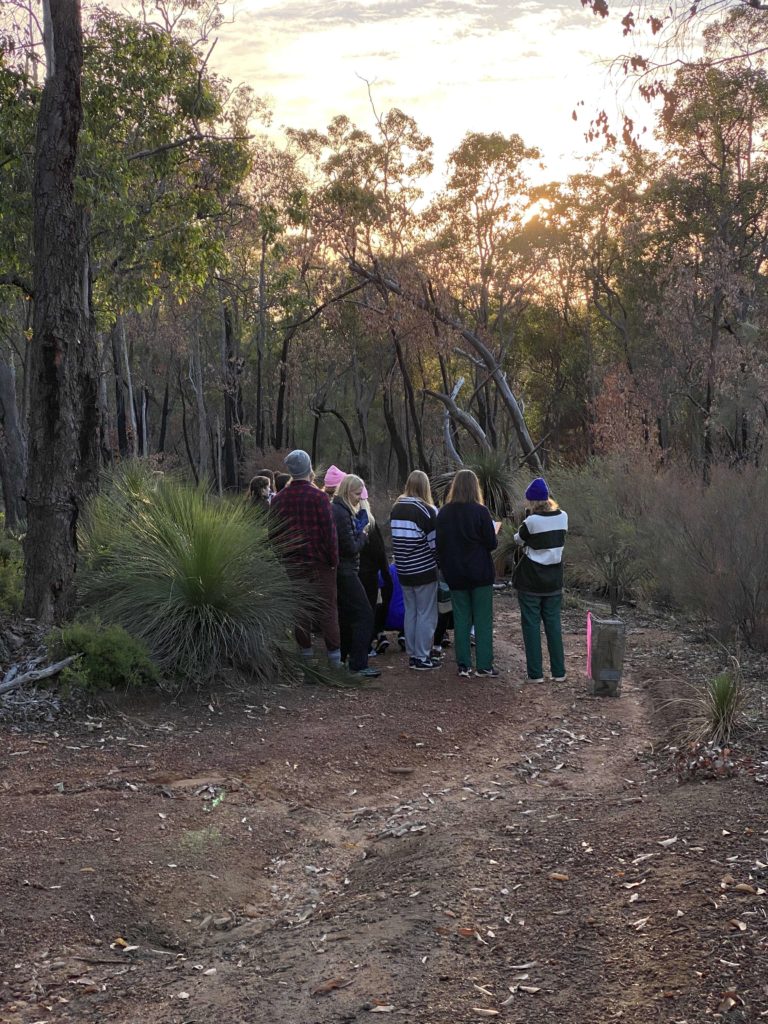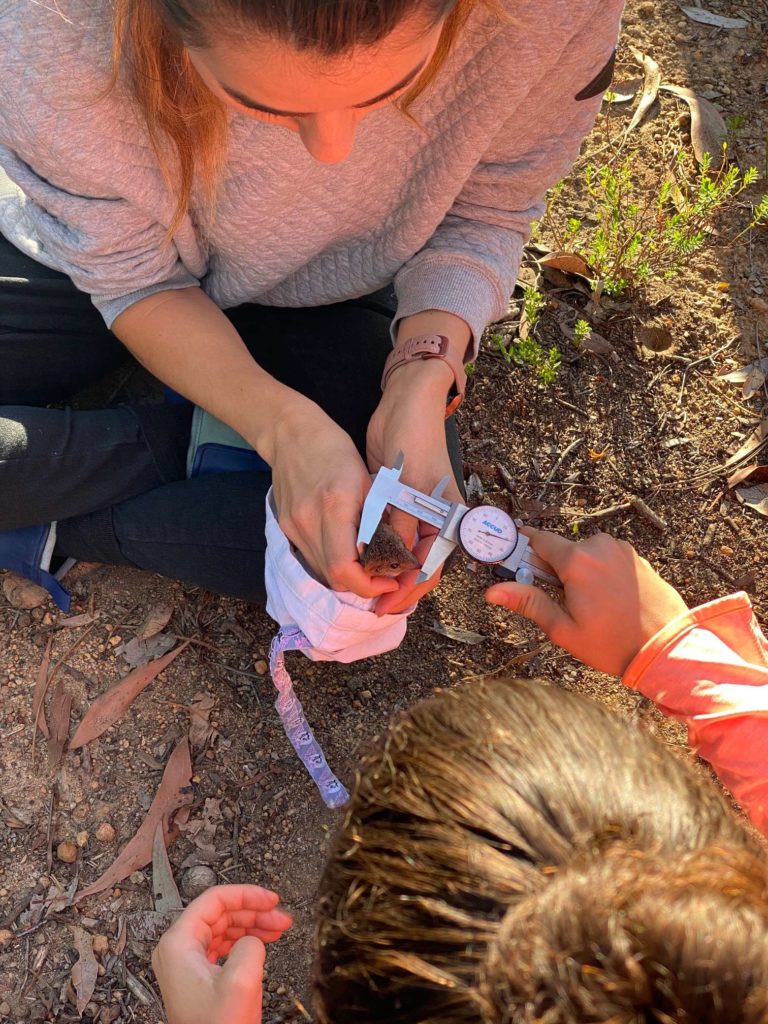Year 11 Biology Camp: Working in the Field

The Biology fieldwork camp to Beelu National Park gave students the opportunity to experience working as biologists in the field. The girls observed the characteristics of an ecosystem, collected and collated data, addressed animal ethics and conducted a night investigation involving sampling invertebrates.
The focus of the two-day camp was the application of fieldwork sampling to use in decision making towards biodiversity conservation. Students worked collaboratively in teams to conduct the fieldwork, showing maturity and creativity and genuine care and compassion for the ecosystem they were working in.


The Perth Hills Discovery Centre provided our Biology class with some first-hand, educational experiences starting off with viewing and being informed about Australia’s native birds of prey. We even got to hold some of these amazing birds. We then set out the sheffield traps, designed for trapping marsupials, which we would revisit in the morning. Our final event for the night was our scientific investigation. Making sure we were accounting for all our variables, we set up and started our observations testing our hypothesis: Changing the colour of the light projected onto a white sheet, (white and red), will affect the abundance and percentage cover of invertebrates attracted to the sheet. Sofia Freund
I enjoyed my time at the Perth Hills Discovery Centre. We first encountered birds of prey, the barn owl and the wedge tail eagle. The birds of prey were an exciting experience as we learned about their adaptions and hunting techniques. This opened my eyes to how important these birds are to our ecosystem. For example, the important role they play in monitoring our mice populations and breaking down dead animal carcasses. Alessia Younas
The highlight of my Biology camp experience was the marsupial trapping. We started off by making the ‘icky bait’ with sardines and peanut butter mashed into balls which were attached to the hooks inside the sheffield traps. We were then able to decide where we wanted to place our traps whether they were next to a Grass tree or between two burnt logs within the monitoring area. The area had recently been burnt so it was harder to camouflage the traps. To comply with animal ethics, we collected each of our traps in the early morning which allowed the animals to be safe and calm if captured. I waited patiently for my turn to check my trap. I found that my trap had caught a native type of mouse called a mardo. The animal had to be processed, so I assisted the animal handler by holding it in the bag to keep it calm and helping to measure its weight, head length and foot length. I finished by releasing my mardo back into the forest which was an amazing experience I will cherish forever. Olivia D’Alton


The Power of Expectations in Shaping Student Success – Jennifer Oaten
Discover the transformative impact of expectations on student success. Learn how belief shapes outcomes in education and beyond.

Inspiring Change: Earth Day 2024
Our Earth Day celebration this week was a powerful reminder of our collective responsibility to protect our planet for future generations.

Unlocking the Power of Connection: Dr Mark Williams Inspires Students
After the success of his first visit last year, we were excited to welcome Dr Mark Williams back to talk with our Years 7, 8 and 9 students this week.
- AnalyticalSkills, Collaboration, ConnectingLearning2Life, Featured, Stewardship
Author: Santa Maria College
Santa Maria College is a vibrant girls school with a growing local presence and reputation. Our Mission is to educate young Mercy women who act with courage and compassion to enrich our world. Santa Maria College is located in Attadale in Western Australia, 16 km from the Perth CBD. We offer a Catholic education for girls in Years 5 – 12 and have 1300 students, including 152 boarders.






